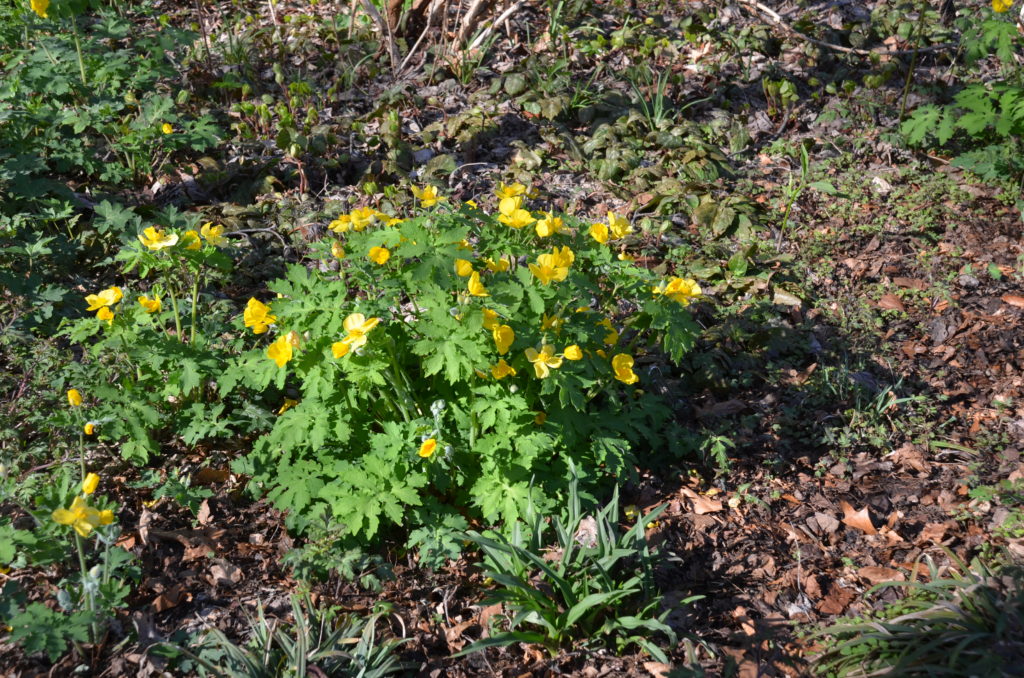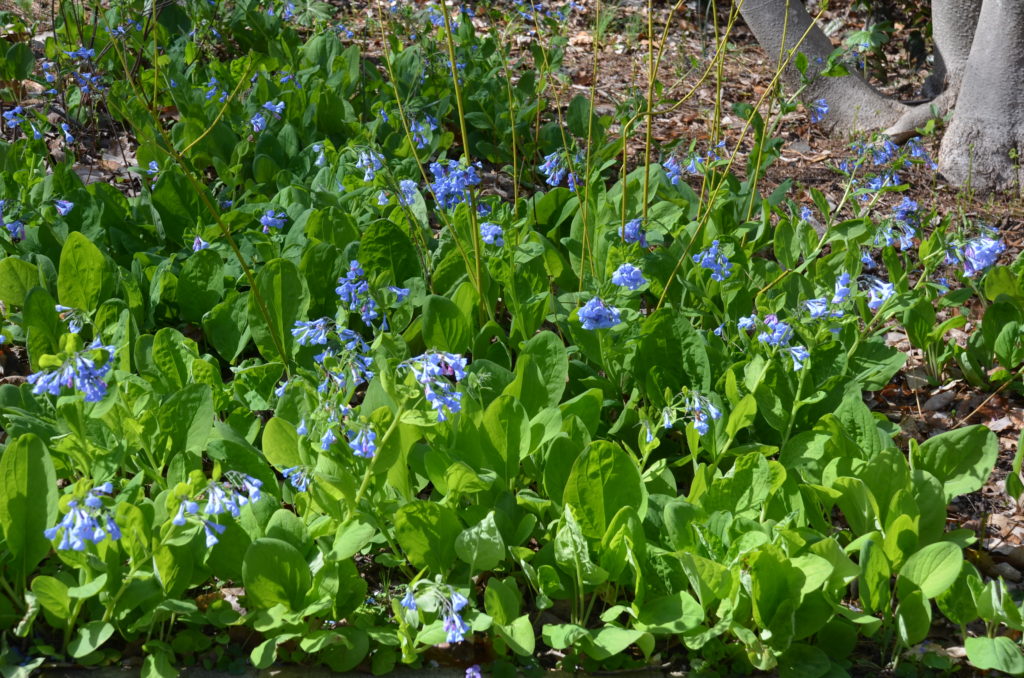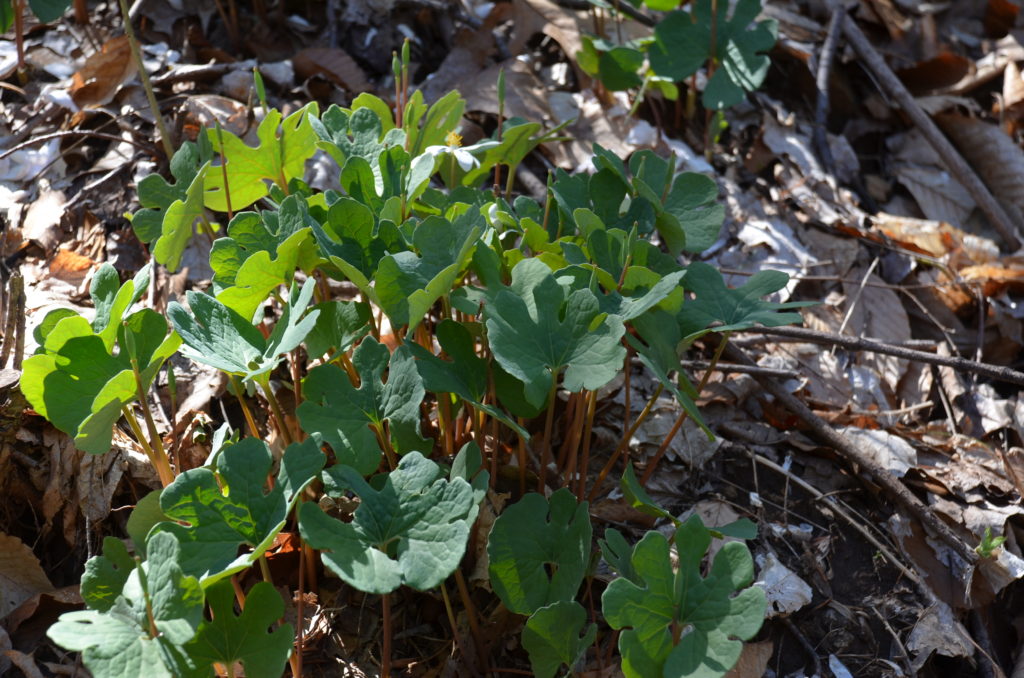These six native wildflowers emerge in early spring in rich woodland soils. In gardens grow them in moist, organically rich soils in partial to full shade. Adding compost substitutes for fertilizing. All grow in moderately acidic to slightly alkaline soils (pH 6.0-7.5). Plants go dormant by early to mid-summer, earlier if soils dry out. Under ideal site conditions, all six will naturalize (colonize) by self-seeding. Early arriving pollinators, especially bumble bees are often seen working these spring wildflowers. No diseases or insects trouble all six wildflowers if site is correct.

Celandine poppy (Stylophorum diphyllum) grows in Eastern U.S. wildflower gardens (zones 4-8). Clusters of 4-petaled, yellow flowers bloom in spring atop stems, typically growing 12-18 inches tall. Blue-green, pinnately lobed foliage is silvery below.
Virgina bluebells (Mertensia virginica) is a native wildflower (zones 3-8). This clump-forming perennial grows 1-2 feet tall with terminal clusters of pendulous, tubular, sky blue flowers (to 1- inch long) open in early spring; bluish green 3-4″ long leaves.

Trout lily (Erythronium americanum) grows 4-6 inches high, foliage easily identified by their thick fleshy, mottled brown and purple leaves that mimic brook trout. Individual, nodding, bell- or lily-shaped yellow flowers (zones 3-8).
Bloodroot (Sanguinea canadensis) grows 6-10″ tall and may form large colonies over time (zones 3-8) in rich soil. Each flower stalk produces a single 2 inch wide, 8-10 petaled, white flower with numerous yellow stamens in center. Flowers open in morning, close at dusk and last 1-2 days. As the flower blooms, the leaf unfurls. Single palmate, deeply-scalloped, grayish-green, basal leaves, some measuring 9″ across, remain attractive into early summer.

Twinleaf (Jeffersonia diphylla) is a clump-forming plant that typically grows to 8” tall when in flower in early spring, eventually reaching 18” tall in late spring when its fruits ripen. Its 5-6 inch long-stemmed, blue-green basal leaves are deeply divided into two lobes (look like two separate leaves). In early spring (April), its 1” wide white, 8-petalled, cup-shaped flowers bloom singly atop rigid 8” leafless stalks (zones 5-7).
Shooting star (Dodecatheon meadia) is an eastern U.S. native whose flowers appear like a shooting star plummeting to earth (zones 4-8). Of the six wildflowers listed here, it is the last to bloom in the spring. From each basal rosette of lance-shaped leaves come 1-4 sturdy, leafless, center flower scapes rising to 20″ high. Each flower scape contains 8-20, nodding, 1″ long flowers. Each flower comprises 5-reflexed petals and a cluster of yellow stamens. Flower colors range from white to pink to light purple.

 Posted in
Posted in 
